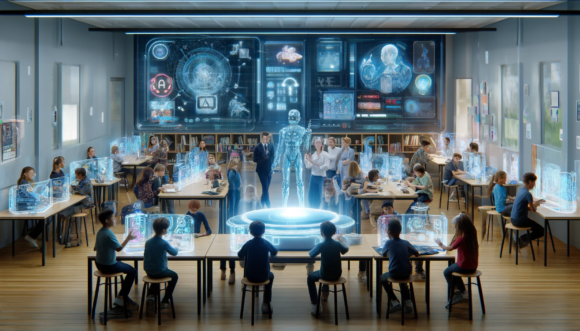
AI in the Classroom: Crafting Responsible Guidelines for Educators and Learners
This week I have had the pleasure of working with Singapore American School (SAS) in supporting educators around AI as well as starting to draft some guidance documents for the wider school community. It has been a great experience seeing first hand how a school can take the Washington State AI Guidance released by the Office of Superintendent of Public Instruction reflecting on it, tearing it apart, making it their own and building upon it. The exact thing we hoped would happen in creating this guidance for schools. It truly is an honor to be a part of this process.
One aspect that is standing out to me in the draft document so far here at SAS is the guidance for students and teachers about both parties having responsibilities when it comes to using AI in the classroom.
In the draft form of the document here is what the student section states:
Guidance for Students on Discussing and Explaining Their Workflow:
**disclaimer about following teacher/class expectations**
Transparency: Always be clear and honest about how you’ve used AI in your assignments. Whether you’ve used it to generate ideas, conduct research, or check your work, your teachers and peers should know how AI tools have contributed to your final submission.
Understanding: You should not only use AI but also strive to understand the concepts and content it helps you create. Be prepared to discuss the reasoning behind your work, how you’ve used AI to assist you, and the knowledge you’ve gained through the process.
Reflection: Reflect on your learning process with AI. Consider what you’ve learned independently and what insights AI has provided. This reflection will help you articulate your workflow and the role AI played in your assignments.
Collaboration: Engage in discussions with your peers and teachers about the use of AI in your work. Sharing your experiences can foster a community of learning where everyone benefits from collective insights and strategies.
I really appreciate this take on supporting students in leveraging AI in a human-centered approach and that reflection, discussion and critical thinking about AI’s use, its outputs and our own use of it.
Pair with this guidance for students is the following responsibilities that teachers have to students. This section is included in both the student and educator section of the guidance:
Teachers’ Responsibilities Regarding AI Use in Assignments:
Clarity: Before assigning any work, teachers will clearly state whether AI is allowed and to what extent. This clarity ensures that all students understand the expectations and can adhere to them, fostering a fair and equitable learning environment.
Rationale: Teachers will provide reasons behind their decisions on AI use in assignments. Understanding why AI is permitted or not helps students see the value in developing their own skills and knowledge, even as they learn to leverage technology effectively.
Guidance: Educators will guide students on how to use AI responsibly when allowed. This includes teaching students to critically assess AI-generated content and to use AI as a tool for learning enhancement rather than a shortcut.
Support: Teachers will offer support and resources for students to learn about AI and its applications. This support ensures that all students, regardless of their prior exposure to AI, can confidently use these tools in their academic work.
These are the draft statements. The AI committee at SAS are now taking these and customizing them even further to meet their needs. These guidelines ensure that the integration of AI into our curriculum enhances educational outcomes without compromising the principles of academic integrity. Our goal is to prepare students not only to succeed academically but also to navigate the ethical challenges of using AI and other technologies in their future careers and lives.
Making this part of the guidance where both students and educators understand they have a responsibility and that they can and should hold each other accountable to the learning and the learning environment. If a student is unclear on the rationale for not using or using AI on an assignment they should have the right to seek clarification from their teacher. At the same time a teacher should have the right to seek clarification from students on their workflow in creating pieces of work. Both parties have a responsibility when it comes to AI in the classroom and within the work that we do in learning. Making sure all parties understand their responsibilities, calling them out, and being transparent I believe is a great approach.






